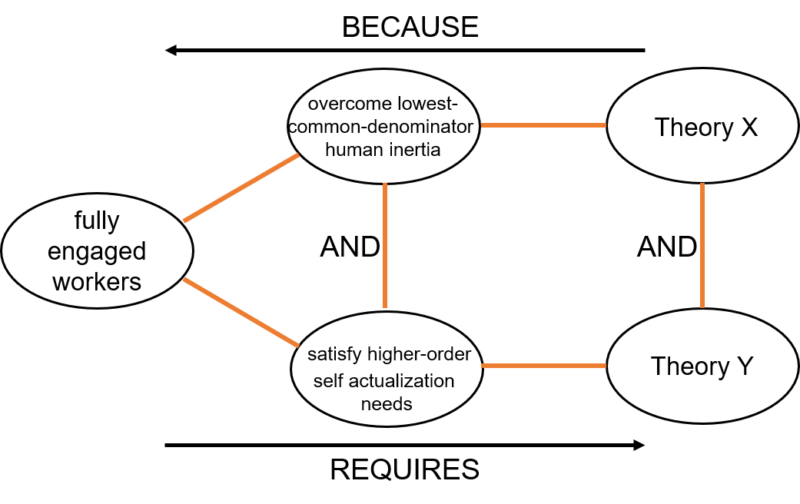
There’s a joke that goes something like… Ask me what the secret of comedy is.
‘What’s the secre…’
‘Timing’.
It’s hard to get the timing of many things right. At the more difficult end of the spectrum is innovation timing.
That said, one of the emerging phenomena arising from Covid-19 and the Disaster Cycle is that for a lot of work related innovation possibilities the timing question becomes, ‘now’. Especially for those that during the last seven months have had time to acclimatise to working from home.
Prior to the pandemic, most bosses were minded to ask their employees to work in the office. The rationale being that employees are being paid for their time, and its only when we can physically see people in the office that we can be sure they’re earning their salary. Never mind the fact that said employees might spend 4 hours of the day with their brain in neutral. Or worse. Then along comes lockdown and suddenly bosses have no choice but to trust that the people working for them will put in the hours. By all accounts, this trust seems to have been justified. Treat people like children and they will behave like children. Treat people like adults and they will behave like adults. Weird.
No innovation happening here so far though. And still a fairly strong likelihood that the four hours of brainless coasting a day is still happening. Only now its easier to hide the fact thanks to lack of camera resolution during Zoom meetings. Where a thousand yard stare and intense listening look indistinguishably alike.
Back in 2010, Cali Ressler and Jody Thompson published their book, ‘Why Work Sucks And How To Fix It: The Results-Only Revolution’. It offered up a revolutionary way of working based around the idea that if bosses gave workers control over how they achieved the outcomes they were being paid for, the company would get significant cost savings and workers would get their lives back. Actually it was a bit more radical than that. As can perhaps be seen from the book’s 13 ‘guideposts’:
1)
People at all levels stop doing any activity that is a waste of their time, the
customer’s time, or the company’s money.
2) Employees have the freedom to work any way they want.
3) Every day feels like Saturday.
4) Work isn’t a place you go, it’s something you do.
5) People have an unlimited amount of paid time off as long as the work gets
done.
6) Leaving the workplace at 2pm is not considered leaving early; arriving at
the workplace at 2pm is not considered coming in late.
7) Nobody talks about how many hours they work.
8) Every meeting is optional.
9) It’s okay to catch a movie on a Tuesday afternoon; it’s okay to grocery shop
on a Wednesday morning; it’s okay to take a nap on a Thursday afternoon.
10) There are no work schedules.
11) Nobody feels overworked, guilty, or stressed out.
12) There aren’t any last-minute fire drills.
13) There’s no judgment about how you spend your time.
The book was mainly built around an experiment conducted at US retailer Best Buy, to implement a Results Only Working Environment (ROWE) across nearly all of the staff at their HQ in Minneapolis.
The whole thing was built on trust, and treating workers like adults.
It lasted until 2013. When, it sounds like the CEO decided that people couldn’t be trusted after all, and that, human nature being what it is, we all of us have a tendency to try and goof off after a while. Treat people like adults for a couple of years, in other words, and they’ll behave like adults. Especially if they’ve just been let off the leash and given the reward of incredible time flexibility. But then, adults being what we are, what was once exciting becomes the everyday norm, which in turn becomes the new tedium.
What the Best Buy CEO apparently got caught up in was the old Theory X/Theory Y contradiction:

Which is to say that he saw adults naturally migrating from Y to X just through the Second Law Of Thermodynamics. Entropy increases. Humans need extrinsic motivation because intrinsic motivation tends to zero over time.
In the TRIZ world, of course, we know that there’s no such thing as the right answer to any either/or question. It’s not ‘X or Y’, it should be X-and-Y. Or, better yet, Z. A solution that transcends the initial either/or question. Several esteemed work psychologists – including Abraham Maslow no less – posited possible ‘Z’ solutions fairly swiftly after Douglas McGregor first published his Theory X/Theory Y hypothesis in the 1950s. To be honest, though, neither Maslow nor any of the other Theory Z searchers seemed to understand the idea of contradiction solving.
But that can’t be allowed to be the case any more. Now we also understand that, complex as humans might appear, when distilled down to first principle level we’re all driven by just four things: Autonomy, Belonging, Competence and Meaning (ABC-M).
The beauty of the ROWE model was that it gave workers their Autonomy back. Emotional entropy, however, means that any feeling of autonomy we gain eventually fades. And when it does, we veer away from Theory Y and back towards needing the carrots and sticks of Theory X to keep us on the boss’s track.
The missing part of the ROWE story seems to us to be that it does little or nothing to tackle the Meaning part of the ABC-M story. We all of us want to spend our precious time doing things that are meaningful. The propensity to goof-off, in other words, only kicks in when we’re tasked with delivering boss-demanded outcomes that are essentially meaningless ‘busy-work’.
So where does this take us?
Well, first up, now that lots of people are forced to work from home, and bosses have realised that we can be trusted, it is perhaps the right time to re-introduce the ROWE concept again? It didn’t work in 2010 because the required foundation of adult-to-adult trust wasn’t there. Now it is.
Maybe, though, what we can now also see is that what’s needed is an evolved version of ROWE. One in which, rather than merely creating a results-only work environment, we design something that is a meaningful-results-only-work-environment. MROWE. The acronym’s not as good, but the idea is a step-change in the right direction.
Timing. The secre…
